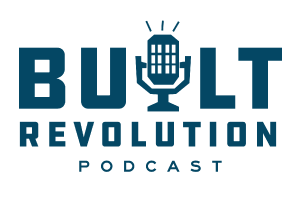In the third episode of Continuum Advisory Group’s Lean and Integrated Project Delivery (IPD) Miniseries…
Introduction to Continuum Advisory Group’s Lean/ITP Series
Two of Continuum Advisory Group’s Senior Consultants, Nate Scott and Kelcey Henderson, just returned from an 11 day trip to India. Outside of it being a wild, unique adventure for both, full of many cows and heart-pounding traffic experiences, there was excellent progress made with one of Continuum Advisory Group’s global, multi-billion dollar clients. The challenge for Nate and Kelcey? Introduce Continuum Advisory Group’s proprietary Integrated Team Performance (ITP) processing addition to various Lean tactics, to a multicultural Indian-based construction team responsible for the construction of a large manufacturing facility.
Accents and cultural norms aside, Lean and ITP were two concepts that no one on the team was familiar with. An ITP project kickoff is typically an intensive collaborative working session, which always includes a certain amount of training on Lean practices. In this session, however, the educational component was dramatically more critical.The results? We’ll come back to that… A little background on ITP first.
Continuum Advisory Group has extensive experience facilitating Collaborative Design Sessions throughout the U.S. and across the globe. Typically 5-day sessions, these intense meetings occur on the front end of large capital construction projects and focus on achieving total alignment between Owner, General Contractor, Engineers, Design and Trade Partners. The goal is simple: create a high performing team operating in a Lean environment through what our firm calls “Integrated Team Performance.” True integration, in our minds, is difficult to achieve. It takes effort, practice, determination, and perhaps most of all, trust. A lot of the best capital construction programs in the world have excelled at collaboration, but not true integration. They’ve reached a level of collaboration where contract negotiations, budgeting and scheduling are routine and fairly seamless events. Expectations are clear across the map: complete the project on time, on budget, and safely with high quality. A great achievement, no doubt.
But what if there was more? What if a team could exceed expectations, come in under schedule, under budget, all with zero incidents and high quality? What if there was one culture across the whole project with a clearly defined common vision of success? What if EVERYONE was bought in and aligned, from the trade partners swinging hammers to the leaders making strategic decisions? This is what we strive for in our Collaborative Design Sessions. This is Integrated Team Performance.
One characteristic that is common among truly integrated teams is their ability to quickly and effectively deploy Lean tactics. Lean is a vast subject that can often be overwhelming. While the terminology and methodology can seem foreign, actually implementing LEAN is the real challenge. Lean is part of the foundation of our Collaborative Design Sessions, and the role of these practices in supporting a project team in achieving their goals cannot be overstated.
Over the next few months, our team will be posting a series of articles that take a deeper look at what it takes to achieve Integrated Team Performance. We will share our experiences from various Collaborative Design Sessions over the years and introduce our ITP and Lean areas of focus that drive high performing teams, including:
- Conditions of Satisfaction
- Culture
- A Common Vision of Success
- Behavioral Norms
- Issue Resolution
- RRAA (Role, Responsibility, Accountability, Authority)
- The Last Planner® System, including Pull Planning
- Value Stream Mapping
- Kan Ban Workflow
- Project Rhythm
In the meantime, you can revisit our article from 2016 here for a refresher. This includes our framework for how to MAINTAIN a lean culture once you’ve created one. We hope you enjoy it and we look forward to sharing future Lean ITP content.
Oh, I almost forgot. How did our two American consultants end up with our new friends in India? Well, it was off to a rocky start as one of the leaders made his concerns known: that a Collaborative Design Session, led by two consultants who had never visited India, would not work with a 100% Indian audience. 11 days later, he couldn’t speak highly enough of the level of engagement that was achieved and the progress that was made. They’re now equipped with the tools and knowledge to deliver a world class project in India in record breaking time for our client. As for Nate and Kelcey, let’s just say they enjoyed the experience, but they’re happy to be home.

